Makes and Models
EVs and the Japanese Manufacturers
I like to get a feel for what is truly happening in the EV world by heading over to the Japanese to see what they are up to. The Japanese make the best cars in the world, at least from a reliability and practical point of view, so it makes sense to me to have a look at what their plans are when it comes to EV innovation, invention and implementation.
Mazda

Mazda MX 30 EV
Mazda is planning to introduce ‘Skyactiv Multi-Solution Scalable Architecture’ for hybrids, PHEVs and EVs in 2022, and they plan to offer three EV models, five PHEV models and five hybrid models sometime between 2022 and 2025. Mazda will also keep hybrids and PHEVs as part of their saleable new cars beyond 2030.
By the end of 2023, Mazda plans to show at least two plug-in hybrids by the end of the year.
In 2026 Mazda plans to show the platform for a new generation of EVs in the early part of the year.
By 2030 Mazda plans to offer a hybrid or electric variant for every model that Mazda has in their line-up. However, even though Mazda will develop a dedicated EV platform by 2025, Mazda’s majority of vehicles beyond 2030 will be hybrids and plug-in hybrids, and, as such, Mazda is not about to stop developing its internal combustion engines anytime soon.
Honda
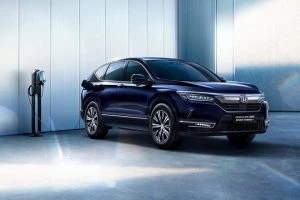
Honda EV Crossover
Honda plans to develop its own solid-state battery tech, rather than relying on outside developers.
By 2023, a Honda EV built in partnership with GM, reportedly a crossover, is expected to enter production.
Honda foresees that 40% of their models will be electric or hydrogen fuel-cell powered by 2030, climbing to 100% by 2040. Honda is one of just a handful of automakers alongside Toyota, Hyundai, and BMW, to devote plenty of their development energy into to hydrogen fuel-cell vehicles.
Toyota
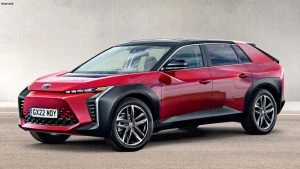
Toyota BZ EV Concept
By 2025, Toyota plans to launch 60 new hybrid, electric, or fuel-cell vehicles by the end of that year, and it also expects to have reached its goal of selling 5.5 million EVs each year. Their dedication to hydrogen fuel-cell vehicles is strong, and they remain big game players in this sort of technology.
Looking across the Tasman (where NZ’s PM, Jacinda Ardern, put her foot in it by claiming that Toyota would be providing EV utes in just 2 more years) it is evident that Toyota will not be putting all their eggs in one basket and going totally bent on EV production. Toyota is adamant that a slow EV uptake is more likely, and hence they would not be giving up on their particularly good hybrid engine technology any time soon.
Nissan

Nissan ids Concept EV
Nissan is the manufacturer of the highly successful Nissan Leaf EV Hatchback, which has been in production for some years now. By 2023, Nissan plans to have launched eight EVs by the end of the year and will be hoping to be on target to sell 1-million hybrid or electric vehicles, globally, per-year. Nissan states that their hybrid technology and their technology to improve their internal combustion engines won’t be stopping before 2030, at least.
Mitsubishi
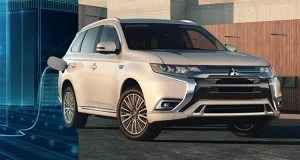
Mitsubishi Outlander PHEV
Mitsubishi has the marvellous Outlander PHEV, which has been in production for many years now. By 2030, Mitsubishi plans for 50% of its global sales to come from hybrid or electric vehicles. I guess that leaves 50% to be still made up of efficient internal combustion vehicles.
Subaru
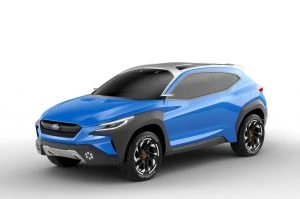
Subaru Solterra EV Concept
Subaru, by 2030, expects 40% of its global sales to come from hybrid or electric vehicles. By 2035, Subaru plans to have a hybrid or electric version of every vehicle in its line-up. Subaru seems to be singing off a similar song sheet to Toyota, where they both suggest that the hybrid vehicle will prove to be more popular in the short term, particularly as the EV infrastructure has a long way to go.
By 2050, Mazda, Mitsubishi, and Nissan have made bold plans to reach net-zero carbon emissions.
The big questions are: Will the EV-charging infrastructure match the manufacturer claims? Will people be able to afford an EV, let alone the huge cost to make their home charge ready, as the ideologically bold demands that some governments introduce along with big taxes? Who is going to pay for all of this?
I read a recent comment where a reader of ‘Car and Driver’ made a very informed comment:
“It’s a ‘no thanks’ on Li batteries from me. Lithium extraction has already spoiled the Atacama desert in Chile and now they have their sights set on the American West. I can reduce my CO2 footprint far more by just driving less than by purchasing a 100 kWh battery, and the 10-20T of CO2 that was released to make it. I’ll wait for fuel cells. As a Toyota driver… I have time.”
Small Overlap Crash Test

The influx of all the amazing new electronic safety aids and crash avoidance systems found on-board new cars has been exceptional. There is no doubt that these systems are helping save lives and minimising injury. There has been one part of the latest car crash testing regime that the Insurance Institute for Highway Safety (IIHS) has brought in as part of their testing in order to help make cars safer.
The IIHS is an independent, non-profit scientific and educational organization dedicated to reducing deaths, injuries and property damage from motor vehicle crashes through their ongoing research and evaluation, and through the education of consumers, policymakers and safety professionals. The IIHS is funded by auto insurance companies and was established back in 1959. Its headquarters is in Arlington, Virginia, USA. A lot of what the IIHS does is crash test cars in a variety of ways to gather data, analyse the data, and observe the vehicles during and after the crash tests to quantify how safe each car is. The results and findings are published on their website at IIHS.org. Car manufacturers have been forced to take these tests seriously because, at the end of the day, these results matter and will affect car sales as the public become informed about how safe their cars will likely be in the event of an accident.
Since 2012, the IIHS has introduced a couple of new tests that they put the vehicles through to see how safe they are in an event of small overlap collision. The driver-side small overlap frontal test was brought about to help encourage further improvements in vehicle frontal crash protection. Keeping in mind that these IIHS tests are carried out using cars with left-hand-drive, the test is designed to replicate what happens when the front left corner of a vehicle collides with another vehicle or an object like a tree or utility pole. This crash test is a challenge for some safety belt and airbag designs because occupants move both forward and toward the side of the vehicle from the time of impact. In the driver-side small overlap frontal test, a vehicle travels at 40 mph (64 km/h) toward a 5-foot-tall rigid barrier. A Hybrid III dummy representing an average-size man is positioned in the driver seat. 25% percent of the total width of the vehicle strikes the barrier on the driver side.
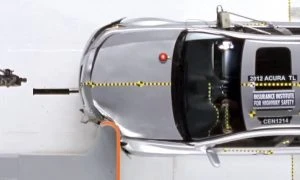
Most modern cars have safety cages encapsulating the occupant compartment and are built to withstand head-on collisions and moderate overlap frontal crashes with little deformation. At the same time, crush zones help manage crash energy to reduce forces on the occupant compartment. The main crush-zone structures are concentrated in the middle 50% of the front end. When a crash involves these structures, the occupant compartment is protected from intrusion, and front airbags and safety belts can effectively restrain and protect occupants.
However, the small overlap frontal crashes primarily affect a vehicle’s outer edges, which aren’t well protected by the crush-zone structures. Crash forces go directly into the front wheel, the suspension system and the firewall. It is not uncommon for the wheel to be forced rearward into the footwell, contributing to even more intrusion into the occupant compartment, which often results in serious leg and foot injuries. To provide effective protection in these small overlap crashes, the safety cage needs to resist crash forces that haven’t been amplified, concentrated on one area or aren’t tempered by crush-zone structures. Widening these front-end crash protection structures does help.
The IIHS also performs the passenger-side small overlap frontal test. The passenger-side test is the same as the driver-side test, except the vehicle overlaps the barrier on the right side. In addition, instead of just one Hybrid III dummy, there are two — one in the driver seat and one in the passenger seat.

Automotive manufacturers initially responded to these driver-side small overlap test results by improving vehicle structures and airbags, and most vehicles now earn good ratings. However, IIHS research tests demonstrated that those improvements didn’t always carry over to the passenger side. Discrepancies between the left and right sides of vehicles spurred the IIHS to develop a passenger-side small overlap test and begin issuing passenger-side ratings in 2017.
It is good that vehicle safety always seems to be on the improve and, with each new model, the new-car buyer can expect a safer vehicle. Thanks to crash testers like the IIHS, ANCAP and Euro NCAP, we are experiencing safer cars on our roads.
A Moment of Silence
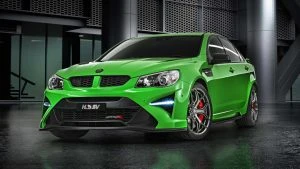
Holden HSV
Over the last decade there have been a few car manufacturers who have pulled out of selling cars in Australia. But, as those leave, there have also been numerous new marques who have arrived on the scene, which is great to see. Let’s not forget the old faithful marques, who are the manufacturers like Toyota, Honda, BMW and Porsche who have been selling cars in Australia for three decades or more. So what’s changed over the last ten years?
Over this last decade we have had to say goodbye to Holden – perhaps the saddest exit. The company was founded in 1856 as a saddlery manufacturer in South Australia, only to be wound up over the last year or so. The Holden roots in Australia have run very deep.
Chery made its arrival in 2011 and stuck around for a few beers and was off again in 2016. Chery once sold Australia’s cheapest new car for under $10k.
During the last decade, Dodge wrapped things up as well, though we still see the RAM logo in the form of the RAM Trucks that are sold new in Australia. A RAM Truck is the king of the Ute/light truck world.
Equally as sad, for some, as the vanishing of Holden has been the cessation of the awesome line of HSV (Holden Special Vehicles) and FPV (Ford Performance Vehicles) muscle cars. Oh how things change when people get a whiff of the climate change spin and big money opportunities with such amazing “clean” vehicles like EVs.
One luxury marque that made a brief appearance was Infiniti. Only recently, we’ve waved goodbye to this very classy and elegant line of cars that for some reason struggled to make their way into a buyer population who were stayed in their buying habits. Some of the Infiniti cars were seriously quick, had unique style and were reliable and comfortable.
2012 saw Opel opening many showrooms across Australia. The new Opel Astra and Opel Insignia cars were quite stylish cars, though they only managed a few sales. They too had a few beers and then folded up a year or two later.
Proton cars also came onto the scene in 2012 and sold a few hundred cars, however the aging models did not sell well in 2017 at all, so they were axed. There are rumours of them making a comeback with a new range of cars under Geely’s ownership.
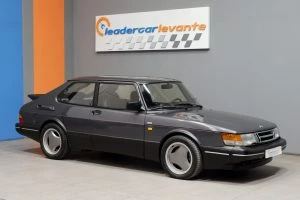
1991 Saab 900 Turbo 16 S
Another very sad day in the last decade of the Australian and global motoring industry was when Saab were forced to wrap up. I miss their individuality and the range of powerful four-cylinder, turbocharged engines. Australia has also said goodbye to Smart cars, a range of tiny city cars that were made by Mercedes. They never sold well.
The new popular car marques that have entered the Australian car market over the last few years has been: Genesis, Great Wall, Haaval, LDV, Mahindra, MG, RAM Trucks and Tesla. Most of these are of Asian origin.
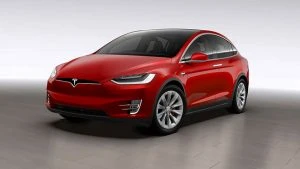
Tesla
Cars For “When you get to my age!”
“When you get to my age…” is a statement commonly made by those of us who may well be getting on in years. Older drivers will likely have more to consider when they come to buying themselves a new car. The need for lots of power may not be such a deciding factor either, and comfort and safety might be the attributes you’d be needing instead. It can also be a fun time buying the new car because you haven’t got all the family commitments to keep in the back of your mind, which would otherwise have swayed your choice of car in the past.
The list of new cars below has been put together with the ‘oldies’ in mind but it by no means is definitive. It is nice to have a practical car which will take the grandkids out to the park or off to the zoo, but these cars also have comfort, reliability, decent space, good safety features, easy infotainment technology and good climate controls. You’ll also find that the following cars are pretty economical and reasonably easy to get in and out of.
The Peugeot non-commercial range of cars are fine cars with style, comfort and practicality. They offer five-star safety and good pricing. Who says motoring has to be boring!
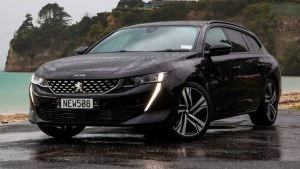
Peugeot 508 Wagon
Toyota’s Camry, Corolla, or RAV4 models are well-priced, safe, efficient and reliable. Lexus models are premium Toyota cars with lavish comfort, excellent reliability, economy and safety.
The Subaru Impreza or Forester are a good go to car for practicality. Maybe you have a dog or need comfort and AWD traction. Their efficiency, safety and reliability have always been good.
Volvo’s new S60, XC60 or XC40 are sensationally comfortable, safe and lovely to drive.

Volvo XC40
Mercedes Benz B-Class range are a great package for comfort and practicality. The style is hard to beat, and they also have the amazing big infotainment screens that wowed the world.
Honda Civic or Accord cars are hugely efficient, reliable and comfortable cars.
Citroen C3, C3 Aircross or C5 Aircross are remarkably comfortable, practical and look cool.
Hyundai Kona has electric power and comfort leading the way, with practicality to boot.
Jaguar’s XE is a lovely car with everything an ‘oldie’ could wish for.
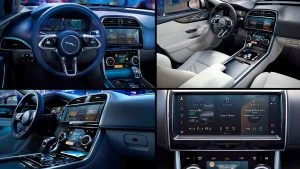
Jaguar XE
Renault has the Captur model range that provides classy SUV looks, outstanding comfort and safety, practicality and nice solid driving dynamics.
Skoda’s entire range of cars are comfortable, well-priced and spacious. Superb models are very stylish and they come in sedan and wagon. There is a model for everyone.
Nissan Qashqai and X-Trail variants are very comfortable, safe and practical; they also offer one of the better SUVs in AWD form with decent go anywhere ability.
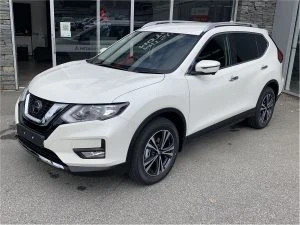
Nissan X-Trail